DFI NF4 SLI & Ultra Infinity Motherboard Reviews
Layout continued
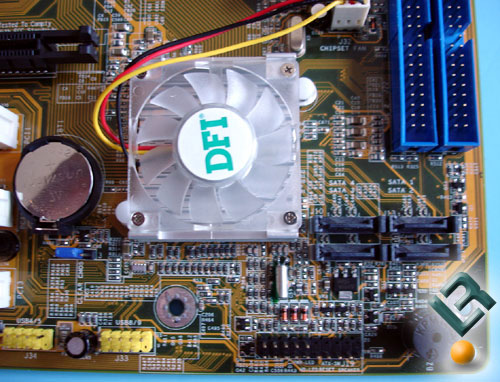
The Infinity SLI features four Serial ATA connectors supporting up to 4 Serial ATA II (3GB) HDD , managed by the NVIDIA nForce 4 chipset, which allow for RAID0, RAID1, RAID0+1, and JBOD (Just a Bunch of Disks).
The nForce 4 chipset also allows spanning across the PATA disks, allowing up to four Parallel ATA disks to be used as part of a RAID array in conjunction with the boards four SATA disks.
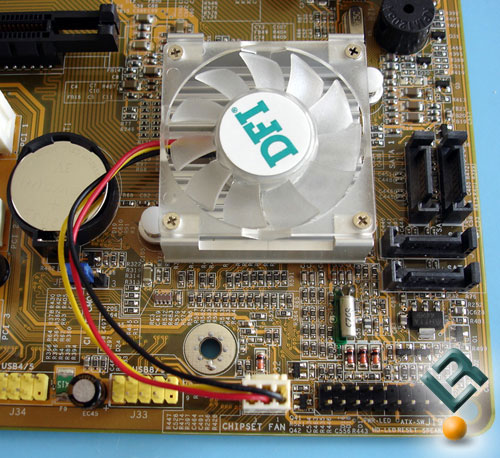
The Infinity Ultra features basically the same arrangement, except for the placement and abilities of the storage connectors. The Infinity Ultra supports RAID0 and RAID1 through the Serial ATA ports and also in conjunction with the Parallel ATA ports.
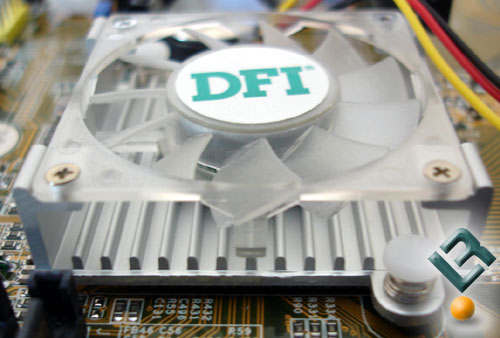
Unlike most other budget motherboards, DFI chose to use an active cooling solution with the Infinity nForce 4 boards. While temperatures during testing were fine, the fan was annoyingly loud, easily audible over a pair of 120 mm fans used to cool the rest of the system. I have to wonder about the cooler itself as it seems to simply be a small piece of aluminum with minimal fins covered by a 40 mm fan. I would definitely have preferred the Sunon cooler used on the LANParty Series, but also feel that this is a better solution for the relatively hot nForce 4 chipset than passive cooling used on most boards.
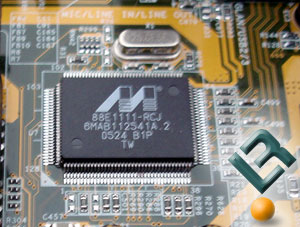
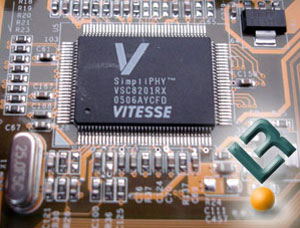
For ethernet connectivity the Infinity SLI uses Marvell’s 88E1111 Gigabit Phy which is fully compliant to IEEE 802.3 (10BASE-T), 802.3u (100BASE-TX) and 802.3ab (1000BASE-T) standards while the Infinity Ultra utilizes the Vitesse VSC8201 Gigabit Phy, which also is fully compliant to IEEE 802.3 (10BASE-T), 802.3u (100BASE-TX) and 802.3ab (1000BASE-T) standards. While neither are cutting edge, both provide more than adequate performance.
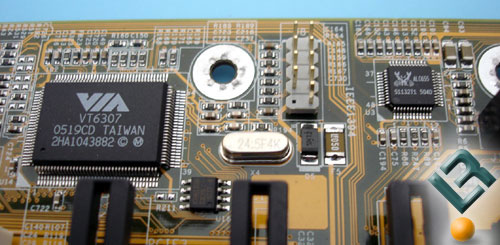
Both the Infinity SLI and Ultra feature the VIA VT6307 chip which supports two 100/200/400 Mb/sec IEEE 1394 ports. For onboard audi, DFI chose the fairly standard Realtek ALC655 6 Channel Audio Codec for the Infinity line.
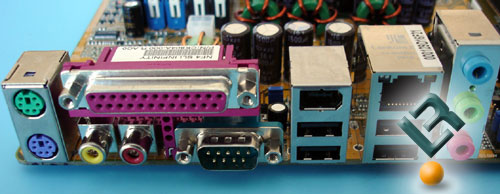
The rear I/O ports feature the standard fare seen on most boards. PS/2 connectors for mouse and keyboard, two S/PDIF RCA jacks (S/PDIF-out and S/PDIF-in), a single parallel port, serial port, IEEE 1394 port, and RJ45 ethernet port. Also found on the rear are the audio jacks for microphone, line in and line out as well as four USB 2.0 ports.
My overall impression of the Infinity Series based on the board’s layout is very positive. I feel both boards are a little cramped around the CPU area, but that the clean layout and very basic features lend to a easy to work with enviroment. My main issue was the number of available 3-pin fan headers. Both the Infinity SLI and Infinity Ultra have three, one each for the CPU, chipset, as well as one free header. Given that most power supplies have a 3-pin connector, and suddenly you have no free 3-pin fan headers. I’d prefer to see at least a pair of free headers on each board.
My only other issue was with the size of the Infinity Ultra board, which comes in a full inch narrower than the standard ATX board. While I had no problems installing the board, I feel that this will cause issues with some case configurations.
Aside from that, these boards are what they are, an alternative for those people who can’t afford a $150-200 motherboard. I feel that some people will be disappointed with the onboard functions provided by the Realtek audio as well as the storage options, but those people will probably be more inclined to purchase the more expensive LANParty Series boards.

Comments are closed.